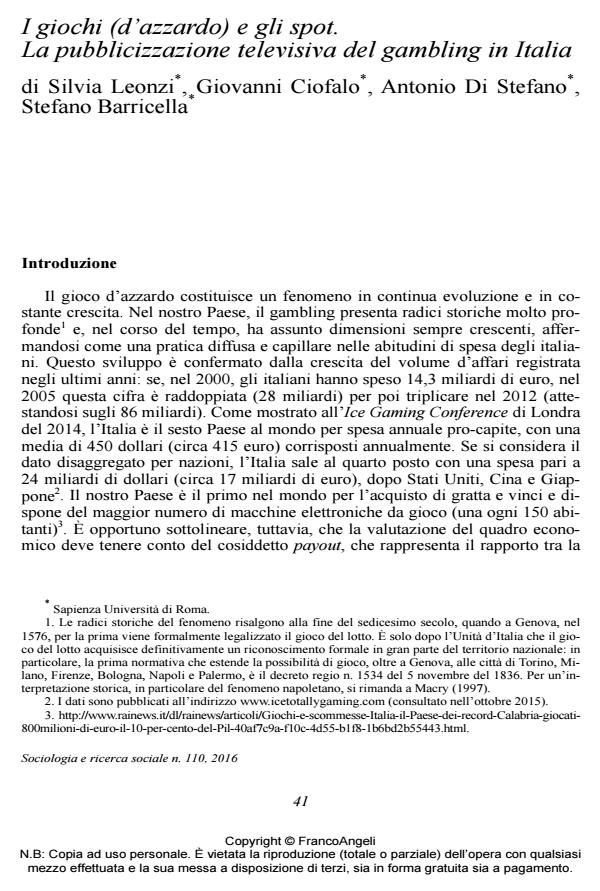giochi (d’azzardo) e gli spot. La pubblicizzazione televisiva del gambling in Italia
Titolo Rivista SOCIOLOGIA E RICERCA SOCIALE
Autori/Curatori Silvia Leonzi, Giovanni Ciofalo, Antonio Di Stefano, Stefano Barricella
Anno di pubblicazione 2016 Fascicolo 2016/110
Lingua Italiano Numero pagine 22 P. 41-62 Dimensione file 248 KB
DOI 10.3280/SR2016-110004
Il DOI è il codice a barre della proprietà intellettuale: per saperne di più
clicca qui
Qui sotto puoi vedere in anteprima la prima pagina di questo articolo.
Se questo articolo ti interessa, lo puoi acquistare (e scaricare in formato pdf) seguendo le facili indicazioni per acquistare il download credit. Acquista Download Credits per scaricare questo Articolo in formato PDF

FrancoAngeli è membro della Publishers International Linking Association, Inc (PILA)associazione indipendente e non profit per facilitare (attraverso i servizi tecnologici implementati da CrossRef.org) l’accesso degli studiosi ai contenuti digitali nelle pubblicazioni professionali e scientifiche
The following article results from a research focused on the television advertising of gambling in Italy. Gambling is considered a cultural object as well as a media one, and the symbolic efficacy is analyzed through Schudson’s dimensions, which allows to «measure» the force of a given cultural product. As a result of gambling addiction becoming a social problem, institutionalized by recent political interventions, some of the commercials analyzed show the development of a narration where the promise of happiness (presented as excitement linked to the game as a performance and a potential win) seems to flourish paradoxically through the very risk of unhappiness related to gambling
Silvia Leonzi, Giovanni Ciofalo, Antonio Di Stefano, Stefano Barricella, giochi (d’azzardo) e gli spot. La pubblicizzazione televisiva del gambling in Italia in "SOCIOLOGIA E RICERCA SOCIALE " 110/2016, pp 41-62, DOI: 10.3280/SR2016-110004